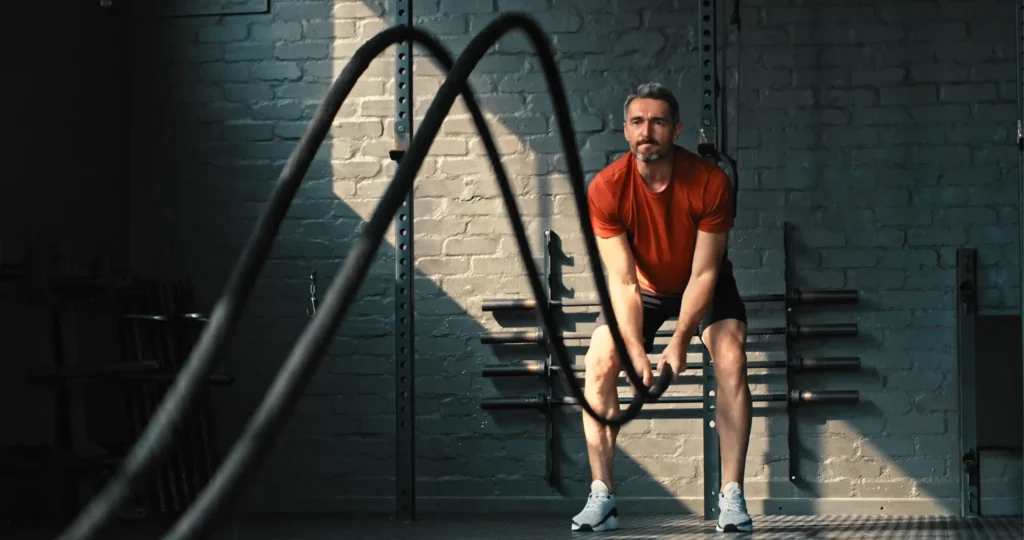
Blog
The Unmatched Power of Exercise: How Movement Builds a Stronger, Sharper, Younger You
Table of Contents
If we told you there’s one thing you can do today that would help you live longer, feel stronger, think clearer, and reduce your risk of nearly every chronic disease—would you do it?
It’s not a supplement. It’s not a treatment. It’s exercise.
At ResetOne, we’re all about cutting-edge tools like peptides and precision diagnostics. But no matter how advanced the intervention, there’s one thing that amplifies it all: consistent, intentional physical activity.
Exercise doesn’t just support your health—it actively improves your biology at the cellular level. It’s one of the most powerful levers we can pull for better aging. And it works across the board.
The Science Is Clear: Movement Changes Everything
Regular exercise doesn’t just help you “stay in shape.” It upgrades how your body functions, protects you against disease, and keeps you feeling sharp as the years go by. The data backs it up:
- Heart health: Improved circulation, lower blood pressure, healthier arteries
- Metabolic support: Better blood sugar control and insulin sensitivity
- Cancer risk: Lower incidence of several types, especially breast and colon
- Cognitive health: Better memory, mental clarity, and reduced risk of dementia
- Muscle + bone integrity: Fewer falls, stronger posture, more independence
And here’s the best part: you don’t have to crush it in the gym. Just 30–45 minutes of movement most days (or shorter bursts throughout the day) can make a huge difference.

What’s Happening Inside Your Body When You Exercise
One of the biggest benefits of exercise is also one of the most overlooked: blood flow.
Increased circulation might sound simple, but it’s one of the most powerful upgrades your body gets when you’re active. Here’s what that extra flow actually does:
- Delivers oxygen and nutrients to your muscles, brain, and organs so they can perform and repair
- Boosts brain function by increasing BDNF (that’s brain-derived neurotrophic factor) and clearing toxins linked to memory loss
- Supports detox and immune function through better lymphatic drainage
- Improves hormone transport, so signals like insulin, cortisol, and estrogen get where they need to go
- Strengthens your blood vessels, keeping your cardiovascular system flexible and resilient
Exercise acts like a delivery system—bringing what your cells need and flushing what they don’t.
Exercise Reverses Signs of Aging
This isn’t just prevention. It’s real biological reversal. Exercise has been shown to:
- Lengthen telomeres, which protect your DNA as you age
- Increase BDNF, which supports memory, focus, and brain adaptability
- Improve metabolic flexibility, helping your body switch between fat and glucose for fuel
- Reduce inflammation, which is behind most chronic disease and accelerated aging
In other words: movement gives your cells what they need to stay younger, longer.
Strength + Cardio: You Need Both
To support real longevity, you need both strength training and cardiovascular movement. They work in different—but equally important—ways.
Strength: The Foundation for Resilience
Muscle isn’t just about tone or strength—it’s essential for metabolism, hormone balance, and long-term health. But here’s the catch: we naturally start losing it in our 30s unless we actively maintain it.
Strength training helps you:
- Burn more energy at rest
- Stabilize blood sugar and insulin levels
- Protect joints and bones
- Improve balance and lower injury risk
- Stay independent and mobile well into older age
You don’t need fancy equipment. Bodyweight moves like squats, push-ups, and rows—done 2–4x a week—can build real strength.
Cardio: The Longevity Engine:
While strength builds structure, cardio builds your engine—your heart, lungs, and mitochondria.
Even moderate, steady movement (like walking, biking, or hiking) helps:
- Improve circulation
- Burn fat more efficiently
- Boost brain health and mood
- Strengthen your nervous system’s ability to recover from stress
And yes, VO₂ max—your body’s ability to use oxygen—is a solid predictor of longevity. But don’t let that intimidate you. You don’t need to train like an athlete. A brisk walk most days can move the needle.
How to Exercise for Longevity (Without Burning Out)
You don’t need a bootcamp or a fitness app telling you to “go hard or go home.” You need a routine that works for your body, your lifestyle, and your biology.
Here’s a ResetOne-approved framework:
- Strength training (2–4x/week): Focus on movements like squats, push-ups, rows, and deadlifts
- Zone 2 cardio (3–5x/week): Walk, cycle, hike, or row at a steady, conversational pace
- Short bursts (1–2x/week): Add some intensity with sprints or quick circuits
- Daily movement: Walk after meals, stretch between meetings, take the stairs—every bit adds up
And remember, your plan should evolve as you do.
Our Approach: Personalized Movement for Your Biology
Just like no one-size-fits-all diet or hormone protocol works, no universal fitness plan does either.
At ResetOne, we build movement plans based on your:
- Biomarkers
- Biological age and recovery ability
- Hormones and inflammation levels
- Goals (strength, performance, body comp, energy)
- Lifestyle, schedule, and real-life demands
Whether you’re starting from scratch or fine-tuning a long-time routine, we make sure movement becomes a tool—not a task.
Movement Powers Everything Else
Peptides are powerful. Nutrition matters. Hormone optimization is key.
But exercise is what activates it all.
It’s the foundation that supports every other longevity tool in your toolkit.
Join the ResetOne Waitlist to get a personalized movement plan built for your body, your data, and your future.